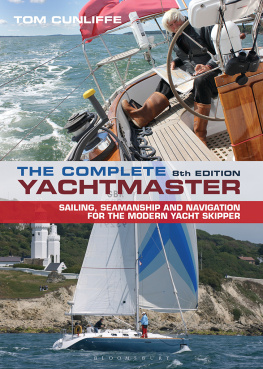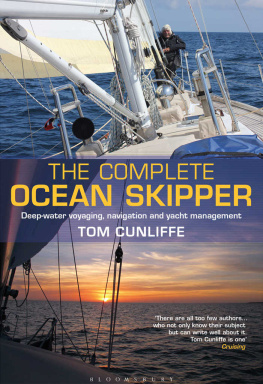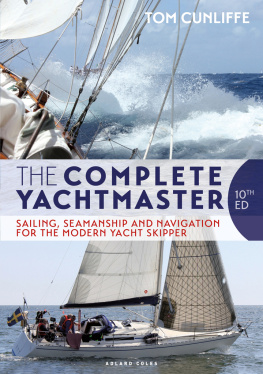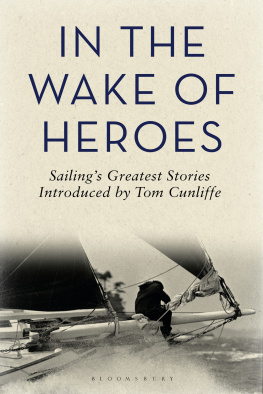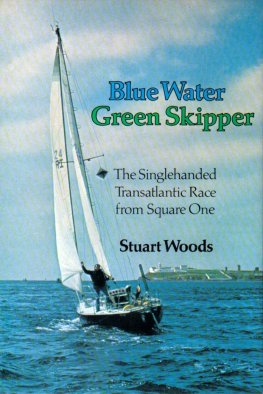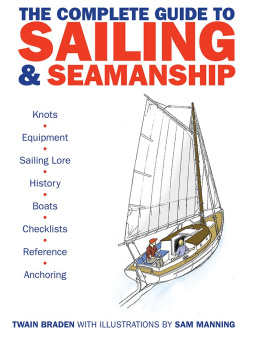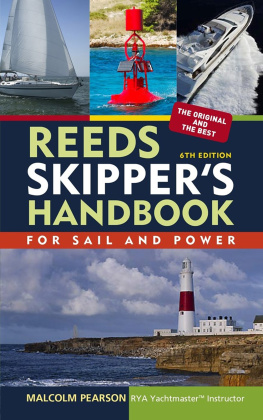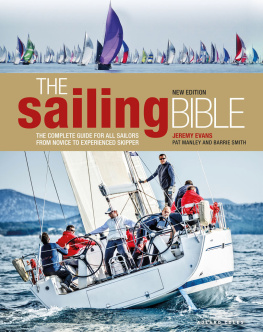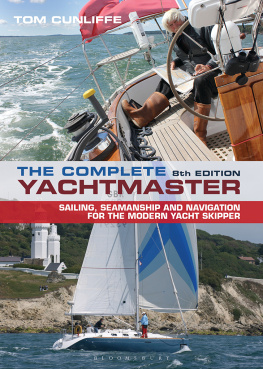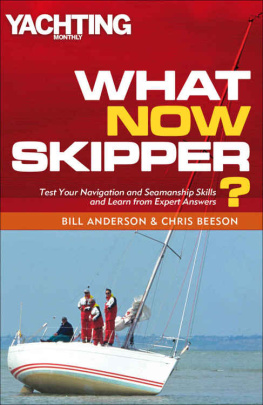Tom Cunliffe - The Complete Yachtmaster: Sailing, Seamanship and Navigation for the Modern Yacht Skipper
Here you can read online Tom Cunliffe - The Complete Yachtmaster: Sailing, Seamanship and Navigation for the Modern Yacht Skipper full text of the book (entire story) in english for free. Download pdf and epub, get meaning, cover and reviews about this ebook. year: 2014, publisher: Bloomsbury Publishing, genre: Children. Description of the work, (preface) as well as reviews are available. Best literature library LitArk.com created for fans of good reading and offers a wide selection of genres:
Romance novel
Science fiction
Adventure
Detective
Science
History
Home and family
Prose
Art
Politics
Computer
Non-fiction
Religion
Business
Children
Humor
Choose a favorite category and find really read worthwhile books. Enjoy immersion in the world of imagination, feel the emotions of the characters or learn something new for yourself, make an fascinating discovery.
- Book:The Complete Yachtmaster: Sailing, Seamanship and Navigation for the Modern Yacht Skipper
- Author:
- Publisher:Bloomsbury Publishing
- Genre:
- Year:2014
- Rating:4 / 5
- Favourites:Add to favourites
- Your mark:
- 80
- 1
- 2
- 3
- 4
- 5
The Complete Yachtmaster: Sailing, Seamanship and Navigation for the Modern Yacht Skipper: summary, description and annotation
We offer to read an annotation, description, summary or preface (depends on what the author of the book "The Complete Yachtmaster: Sailing, Seamanship and Navigation for the Modern Yacht Skipper" wrote himself). If you haven't found the necessary information about the book — write in the comments, we will try to find it.
Tom Cunliffe: author's other books
Who wrote The Complete Yachtmaster: Sailing, Seamanship and Navigation for the Modern Yacht Skipper? Find out the surname, the name of the author of the book and a list of all author's works by series.
The Complete Yachtmaster: Sailing, Seamanship and Navigation for the Modern Yacht Skipper — read online for free the complete book (whole text) full work
Below is the text of the book, divided by pages. System saving the place of the last page read, allows you to conveniently read the book "The Complete Yachtmaster: Sailing, Seamanship and Navigation for the Modern Yacht Skipper" online for free, without having to search again every time where you left off. Put a bookmark, and you can go to the page where you finished reading at any time.
Font size:
Interval:
Bookmark:

CONTENTS
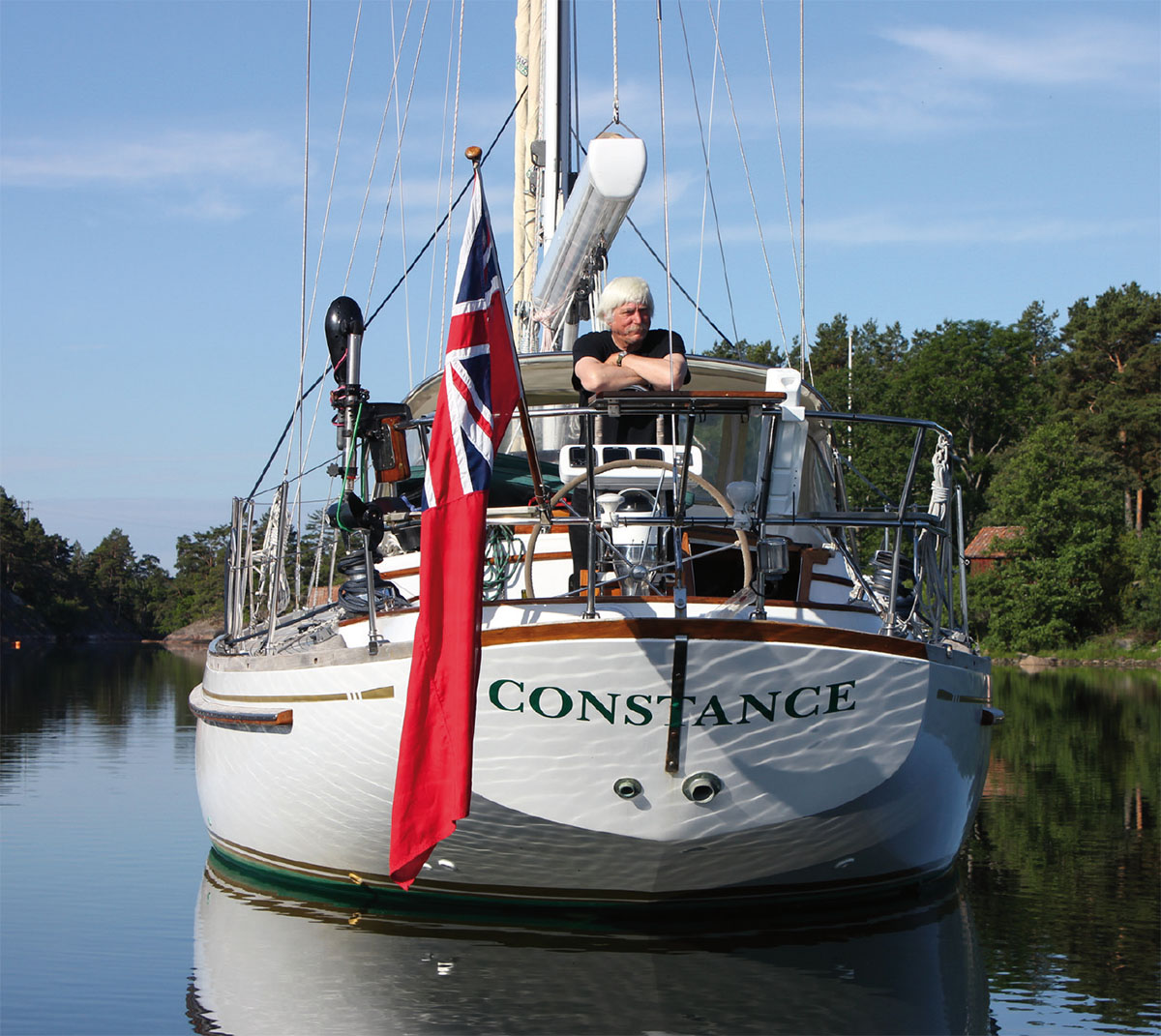
 Early morning time to rouse the crew and get under way.
Early morning time to rouse the crew and get under way.
INTRODUCTION
The sailors market-place is well stocked with books on every topic to do with salt water. I ought to know, Ive written a number of them myself.
There are two groups of specialist sailing texts. One deals with matters such as navigation, boat handling and meteorology, with which every skipper must have more than a nodding acquaintance. The other caters for the ever-enlarging number of subjects relating less directly to the essence of moving a yacht safely from one location to another. The volume you are about to read is designed specifically for skippers and potential skippers. Its purpose is to gather together all those vital areas of expertise to be found in the first group of books, place them in a systematic order between two covers, and discuss them in a practical way. The book should therefore not only prove useful as a companion to a sailing course, either hands-on or theoretical, but will also provide a long-term work of reference for the boats bookshelf.
I make no claim that The Complete Yachtmaster is the only work you will require in order to take charge of a yacht on a round-the-world voyage. Certain items, such as the use of radio communications, require a specialist volume in their own right, and it is not insignificant that teaching the VHF syllabus is a separate subject in most mainstream training systems.
Likewise, the wider aspects of boat maintenance and general husbandry are barely touched here. Peoples needs in such departments vary enormously, as do their talents for servicing them. If you own a classic wooden vessel you will have no desire to read about the application of epoxy coatings to a blistered GRP hull, but whatever type of craft you sail, you should know how to calculate the rise of tide at a given time and location. You may be such a congenital mechanical duffer that the finest manual on boat electrics will be no more than an incubus on your chart table, while the acquisition of the same work could change your neighbours life. Both of you, however, share an imperative demand for the skill to bring your vessels alongside crisply, cleanly and without fuss.
It is to such primary questions that this book is dedicated. In it, you will find the basic information that, when mastered and practised, will enable you to skipper a well-found yacht on coastal and offshore passages, taking due account of night and day, and whatever weather may betide.
One exception to this policy concerns the International Regulations for Preventing Collisions at Sea (Colregs). The rules themselves are straightforward; they must be learned largely by rote, and reprinting them here would be a waste of paper. In the days before the common leisure use of radar and other electronic aids, implementing them was plain sailing, so the subject was avoided in earlier editions. Today, given a basic knowledge of the essential rules, interpreting the readouts from modern yacht electronics have rendered the subject of collision avoidance more complex, rather than less. Used to their full potential, these instruments can provide a remarkable degree of protection against collision. Abused or misunderstood, they lead to increased danger. A chapter has therefore been inserted to deal with these issues.
Throughout the English-speaking world, cruising training schemes have been set up by national and private authorities. The contents of all of these are more or less the same, forming the core of what all skippers should have at their fingertips. The British-based RYA Yachtmaster program is the oldest and among the best established. It has been used as a loose framework for this book, and I can give it no better recommendation than to cite the beginning of my own history as a certificated Yachtmaster.
I turned up at the appointed hour, aged 30, to take an at-sea examination in my own yacht. She was a 13-ton cutter which, at the time, had no engine. I had recently completed a cruise from the UK to Brazil and home again via the Caribbean, the USA and Canada. I was annoyed at the need to have a ticket, but I was driven into the arms of the establishment because I had lost a plum delivery job to a man who had one. My expectations were for needless red tape, a desk sailor as an examiner, and a lot of stupid questions. I couldnt have been more wrong. The list of things I was supposed to know was comprehensive and entirely sensible. My examiner proved far more interested in whether I could sail than if I knew the Morse code (now mercifully discontinued from the scheme), and his probing revealed one or two gaps in my armour of which I was justly ashamed. He passed me, but with a stiff talking-to.
I thought about my exam for six months, then I gave up delivering yachts to become a sailing instructor.
Since those days, I have spent enough time voyaging and working with trainers in other countries to recognise that while such details as buoyage and the format of tide tables may vary, the essentials of seafaring emphatically do not. Sailors are travelling more than they used to. Ever greater numbers of us are taking to the oceans in our own vessels, or as crew for others, while the ready availability of charter craft in the best cruising grounds worldwide is tempting more of us to try something different. For these reasons, though the spelling follows British rather than North American forms, The Complete Yachtmaster is produced without bias to the specific arrangements of any one nation. I wrote the book while resident near the Solent, so some of the photographs depict scenes in southern English waters, but what is going on could be happening anywhere.
Youll notice that the business of sailing and boat handling is explored in the early chapters of the book. The reason for this is simple. When we go down to our boats for the weekend, we tell our neighbours we are going sailing. No one ever says, Oh, Im off for a spot of navigation. See you on Sunday night. The sailing is the most important thing. Of all the facets of cruising, it requires the most practice and, for many people, it is the most difficult thing to learn.
All books have to start somewhere and throughout this text the assumed entry level of knowledge is around the RYAs Day Skipper qualification. The Introduction to Yachting course could also serve a proactive student. What this means to non-RYA readers is that to get the best from this book you need to know port from starboard, North from South, and what constitutes a latitude/longitude position. If youre a sailor, it will also help if you understand the basic principles of tacking and gybing, because its assumed you have these on board when we go into details of how to make the manoeuvres painless. Should you be concerned that the book may be pitched beyond your present level, buy The Complete Day Skipper instead. If youve already read this work, youll find a certain amount of re-cap here. This serves to revise as well as to provide a springboard for more advanced studies of the same subjects.
I cannot end this introduction without a note of explanation concerning the fact that, throughout the text, skippers, mates, cooks and the rest are normally awarded the masculine form of the personal pronoun. To do otherwise would be simply too cumbersome both to read and to write, but absolutely no suggestion of male ascendancy is to be implied. If I note that When the skipper has navigated the yacht on to the rocks, it is he who must bear the blame, I intend no hint that a female skipper would not be just as capable of so dismal a denouement, but to write he or she every time is a non-starter. Therefore, I have followed the convention adopted by the classical languages. The masculine form is used where a single word is required, to refer to a person whose sex is, for the purposes of the text at least, indeterminate or irrelevant. Likewise, a boat is always referred to as she.
Next pageFont size:
Interval:
Bookmark:
Similar books «The Complete Yachtmaster: Sailing, Seamanship and Navigation for the Modern Yacht Skipper»
Look at similar books to The Complete Yachtmaster: Sailing, Seamanship and Navigation for the Modern Yacht Skipper. We have selected literature similar in name and meaning in the hope of providing readers with more options to find new, interesting, not yet read works.
Discussion, reviews of the book The Complete Yachtmaster: Sailing, Seamanship and Navigation for the Modern Yacht Skipper and just readers' own opinions. Leave your comments, write what you think about the work, its meaning or the main characters. Specify what exactly you liked and what you didn't like, and why you think so.

